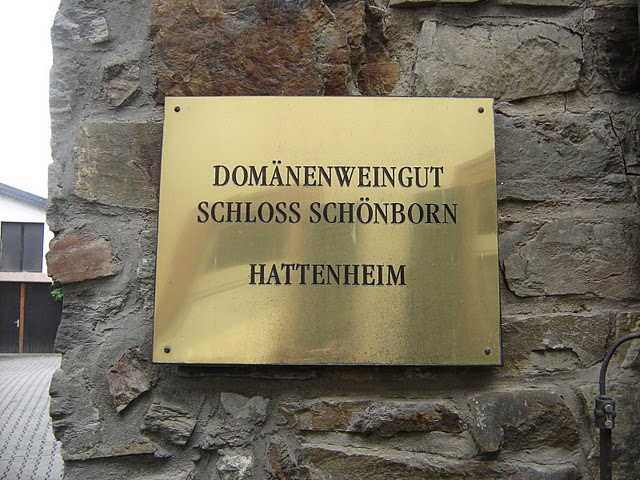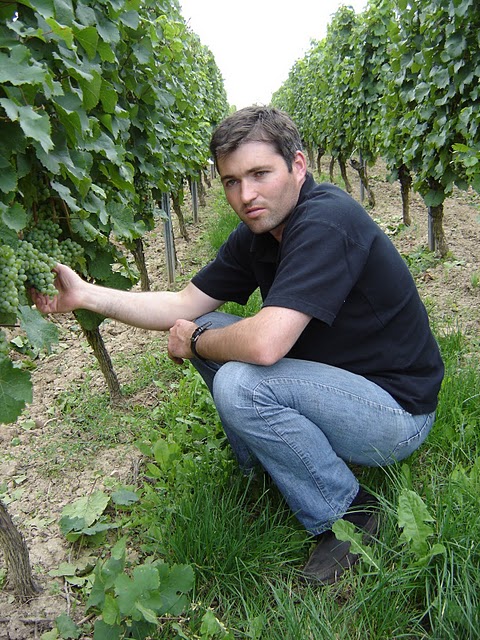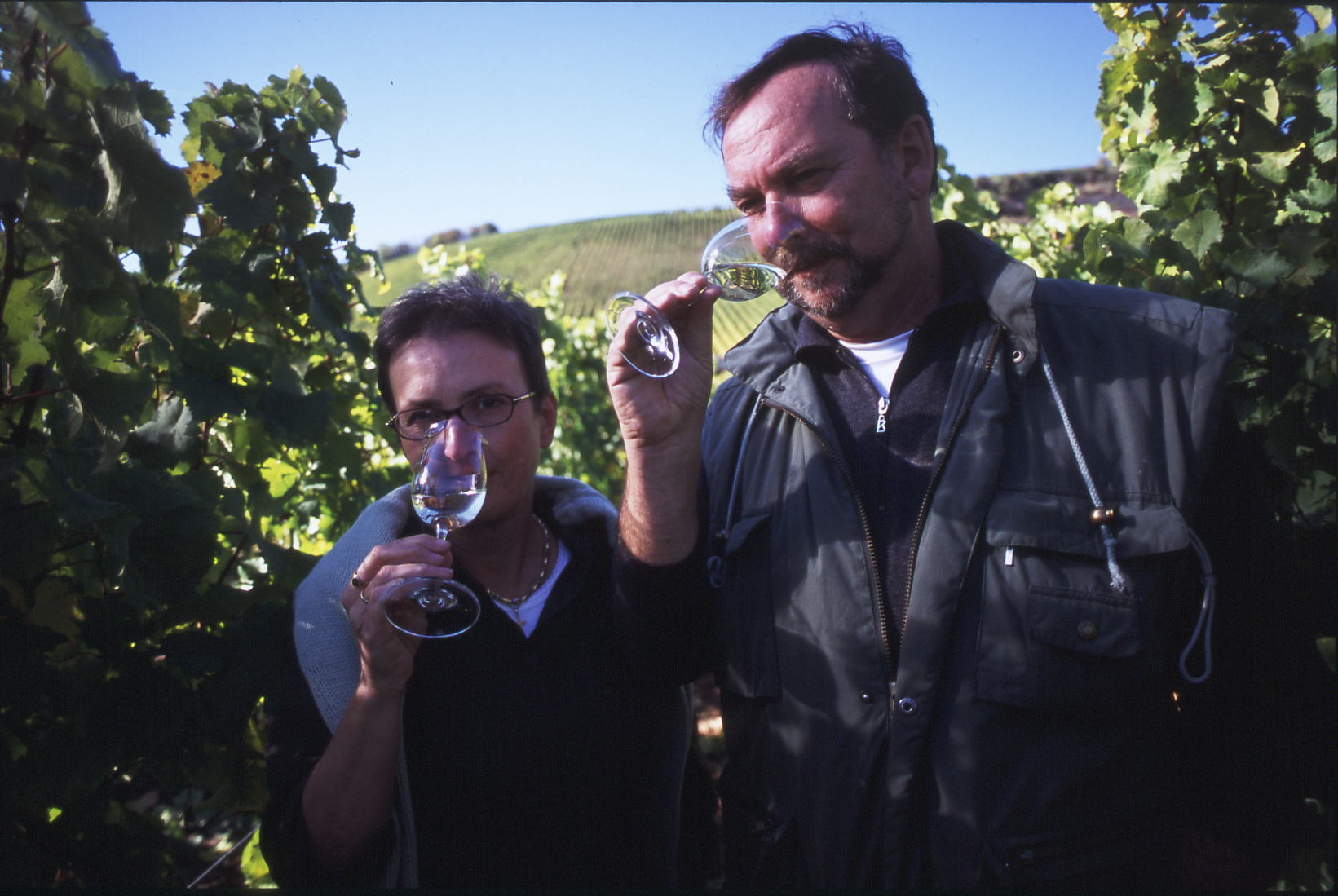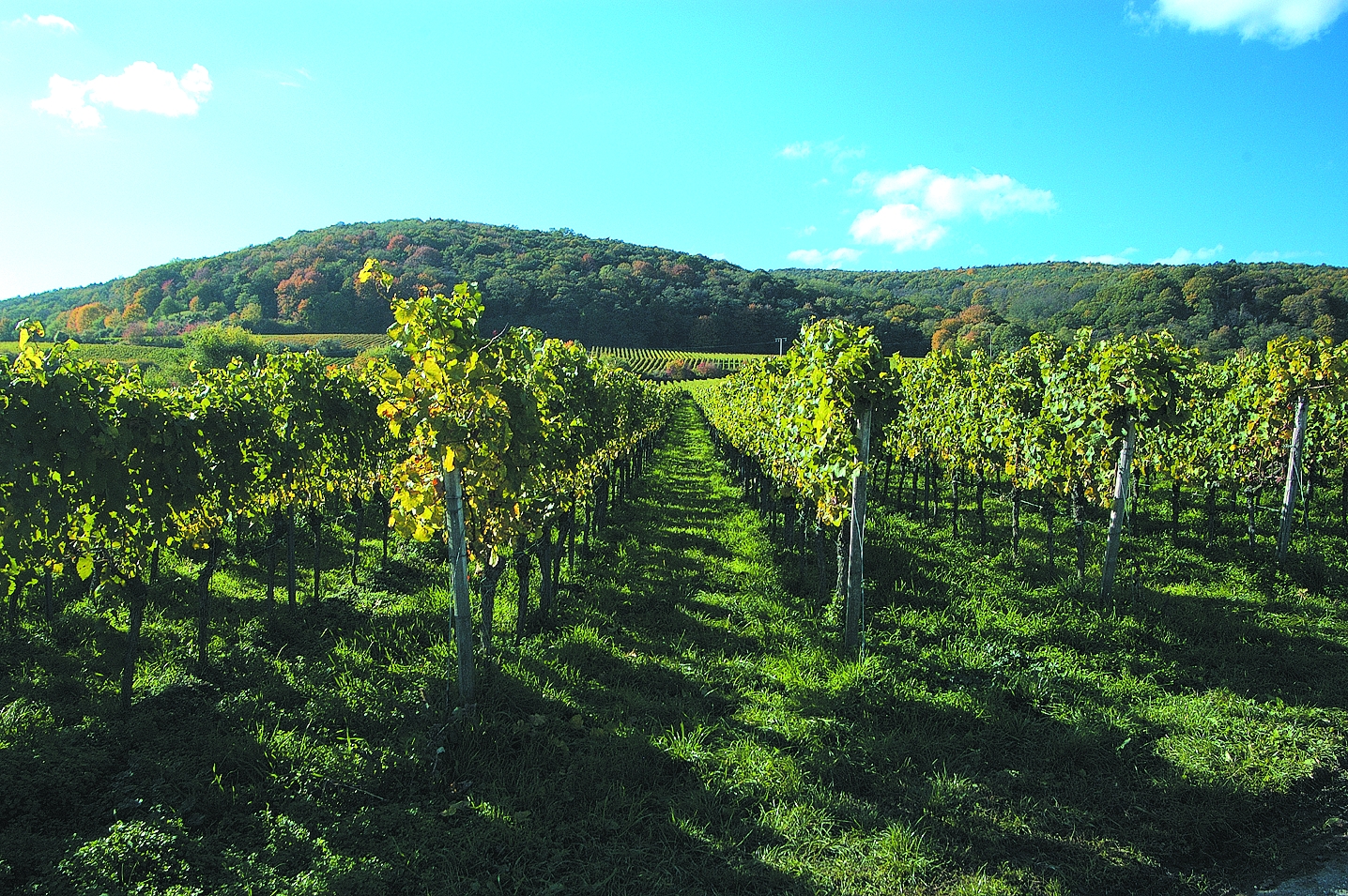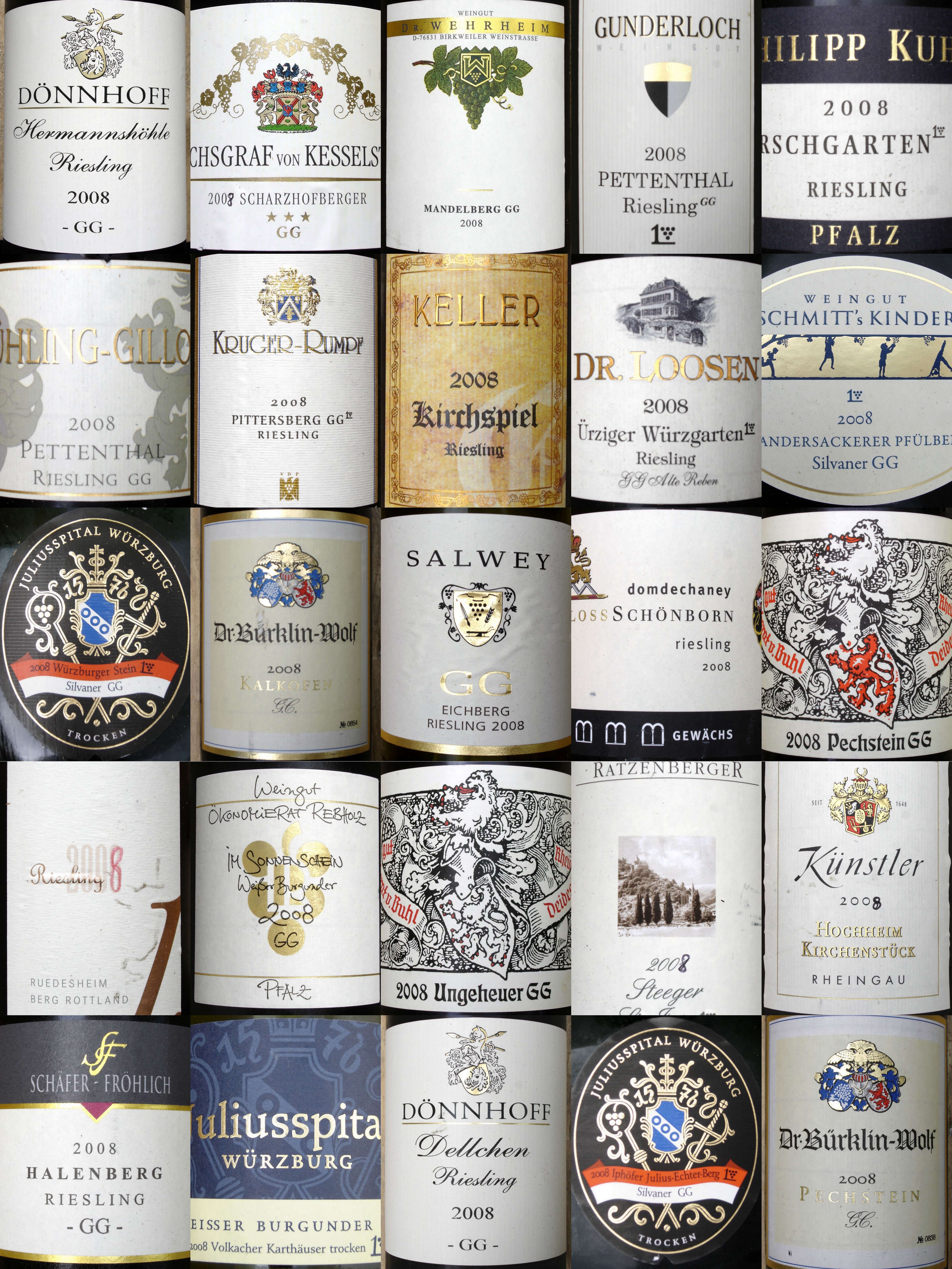Erste Lage Sneak Preview 2009 (full report)
Posted on 27 August 2009
My yesterday post about the 2009 Erste Lage Sneak Preview tasting in Wiesbaden inevitably sounded a little harsh (which a few German colleagues made clear to me). It’s obvious that tasting 180 Rieslings in quick succession rather magnifies the negative aspects of a challenging vintage like 2008. One writer pointed out – and I have to agree – that 2008 Rieslings do develop considerably in the glass, losing their harshest acidic edges and revealing a bit more fruit and minerality.
So yes, there’s hope that some of the better 2008 wines to improve over the next year or two, and while I might need to mitigate my criticism about the green acidity and low fruit, I’ll stand by my opinion that far too many wines have been released as actual Grosses Gewächs / Erste Lage. Many of the less happily located crus (that in a more nuanced classification, should be premiers crus not grands) should have been declassified to second labels (no matter if called Spätlese trocken or single-vineyard dry Riesling tout court) and offered for a lower price. It would have been a clever move of PR reinforcing Germany’s competitive image when it comes to pricing. As it stands, there are too many ordinary Grosses Gewächs Rieslings scoring 85–87 where as a consumer, I don’t see many reasons to spend my money.
Having a look at the different wine regions of Germany, the big loser of 2008 in my opinion is the Rheingau. After a decade of unmatched performance with some stunning dry wines made recently in 2005 and 2007, 2008 has simply proved a little too cool. There’s green acidity across the board and at the Wiesbaden tasting, very few wines showed enough mineral depth and/or consistency of fruit to be recommended. I was particularly disappointed with the village of Rüdesheim, reputed to have risen above the regional average whereas at the comparative tasting, it was neither better nor worse (i.e. average to good only) than its neighbours. Rüdesheimer Berg Rottland and Berg Schlossberg are two crus where I expect outstanding wines and where in 2008, these surely have not been delivered.
A notable exception to this grim picture is the eastern vineyard district on the river Main. The deeper soils here (mostly clay but some loam and limestone) in crus such as Kirchenstück and Domdechaney resulted in wines with more ripeness and some exciting fullness of fruit. Looking at the most successful wines from the Rheingau, Franz Künstler and Schloss Schönborn are two estates that are excellent across the board. Johannishof’s 2008 Berg Rottland is an enticing, pretty rich wine that however lacks the thrilling structure of the 2007. Robert Weil’s 2008 Gräfenberg is only very good, while the Schloss Vollrads (usually not one of my favourite estates) is a good surprise.
Further east up the Main river, Rieslings from Franconia universally disappointed. They are even tarter than the Rheingau wines, austere and often reductive with nominal minerality but really rather charmless. And those that are decently ripe somehow lack any excitement to the fruit. Some people even played around with new oak fermentation, with pitiful results. I found no Rieslings I would consider buying for myself, though Juliusspital as always was rather decent (espeically the 2008 Pfülben Riesling) and Rudolf Fürst’s 2008 Centgrafenberg ‘R’ is austere and very linear but will please aficionados of Romanesque wines. But Franconia has an ace up its sleeve: the earlier-ripening Silvaner grape which in vintages like 2008, is always more satisfying than Riesling. 12 good wines out of 13 tasted (the 13th was another new oak-fermented dud), although it’s to be said none were particularly deep or minerally insightful. Some were quite below their usual level (e.g. Fürst Löwenstein’s Asphodill, and Castell’s Schlossberg). The best series came again from Juliusspital; this has recently been a tremendously consistent estate. An honourable mention also for their 2008 Karthäuser Weissburgunder which, while not on the level of the best vintages, remains one of my favourite expressions of Pinot Blanc.
The Moselle (with its Saar and Ruwer tributaries) is always rather marginal at this tasting, having adopted the Erste Lage system – which focuses on dry wines – to a very limited extent. Dry wines are being produced here but usually fall into the lighter categories of Kabinett trocken and Spätlese trocken while the region’s real cheval de bataille are the sweet wines. But there’s increasing interest in the dry Erste Lage bottlings too, especially in the warmer vintages (which 2008 is not). 14 wines were shown, ranging from a reduced and uninspiring trio from von Othegraven through a simplistic Juffer-Sonnenuhr 2008 from none other than Fritz Haag (well, it might imrpove…) to a rather semi-dry Treppchen 2008 from Dr. Loosen. There was only one estate from the Lower Mosel – a sub-region that specialises in trockens – and Clemens Busch did not disappoint, though both the Marienburg and Rothenpfad 2008 were somewhat simple at this stage, despite a very powerful, almost brutal minerality. In general the Moselle seems to have fared better than many regions in reaching phenolic ripeness but the wines lack the harmony and structure of the truly good vintages. It’s also a year that distinguishes the great terroirs from what effectively should be premiers crus: despite having no great sympathy for Dr. Loosen his Ürziger Würzgarten 2008 displayed the tell-tale peppery, spicy, exotic personality of its cru while in the Scharzhofberger 2008 from Kesselstatt, the royal vineyard site really shines.
At earlier editions of the Erste Lage Sneak Preview the Nahe region provided a lot of excitement and this year was no exception. Through its geographical position it can deliver balanced wines in both cool and warm vintages. The 2008 Rieslings here have poise, minerality, cleanliness and are quite expressive; the acidity is present but unlike the Rheingau or Franconia, it’s not too green. The good performance of Helmut Dönnhoff or Schlossgut Diel is no big news (I don’t usually like the style of the latter but the 2008 Burg Layen Schlossberg is excellent, big and dry) but I’m also quite happy with this year’s releases from Kruger-Rumpf (if you like high acidity) and Schäfer-Fröhlich. The two Grosse Gewächse from Emrich-Schönleber are very austere and withdrawn at the moment, and less impressive than this estate usually is, but they seem to have the potential to re-emerge.
It has also been a satisfying performance from the Rheinhessen, the ambiguous region that produces everything from rock-bottom Liebfraumilch to the ravishing wines of Weingut Keller. We’re further south than the Rheingau here, which helped grape ripeness in 2008. The soils are also more varied than in the Rheingau – where slate predominates, and IMHO resulted in a certain stiffness in the wines. Of the 31 Hessian wines tasted a few were ordinary (which Grosses Gewächs should not be, but forgive the rant) but many were very interesting. The sweet Riesling-inspired dry Rieslings from Gunderloch were distinctive even though the 2008 Rothenberg, weighing in at 14+% alc. was just a bit excessive to my tastes (Traminer rose petals, Viognier peaches and alcoholic breadth); I preferred the spicy and structured 2008 Pettenthal, a bottling that has been going from strength to strength in recent years. From the region’s other stars, Wittmann showed four excellent to outstanding wines that I’d be more than happy to have in my cellar (with the 2008 Aulerde just a little simple and the austere mineral 2008 Morstein the best of the bunch), while Keller only showed one wine, the 2008 Kirchspiel, a masterpiece of harmony and acid integration, although it’s also rather withdrawn on the nose with almost Sauvignon-like nettliness; let’s hope it develops.
Other estates from Rheinhessen were a mixed bag; no great emotions from St. Antony and a disappointing 2008 Brudersberg from Heyl zu Herrnsheim, while there were good surprises from Rappenhof (a nicely mineral 2008 Ölberg), Brüder Dr. Becker (nice fruit in the 2008 Tafelstein), K. F. Groebe and especially Kühling-Gillot, where none of the three wines on show disappointed and the volcanic-scented, brilliantly balanced 2008 Pettenthal is one of my wines of the vintage.
By a margin the most successful German region for dry Riesling in 2008 is the Palatinate. In recent vintages, its almost Mediterranean climate more often than not has been a handicap, such as in 2006 when so many Rieslings soared over 14% alc. and were tasting more of Viognier or Marsanne than Riesling. This vintage, with its naturally high acidity, was the opposite, and the good terroirs of the Pfalz yielded some excellent wines. As in the Moselle, my impression is that the most powerful, distinctive crus benefited most. The winner is Pechstein with its black volcanic basalt: out of six wines tasted (from different producers), all are at least excellent. Vineyards with less personality – such as nearby Kieselberg (sandstone with gravel) – are far less exciting, though the majority of wines are still good.
There were no less than 50 Rieslings on tasting, with 22 I scored as ‘really good’ or better. The best series came from Reichsrat von Buhl: they are ripe across the board and have a lovely flowery elegance to them that is a unique achievement in all of Germany; apart from the 2008 Pechstein the best is the 2008 Ungeheuer. The style of Dr. Bürklin-Wolf is a little broader and heavier but the Pechstein and Jesuitengarten are both very good with intense notes of terroir; the 2008 Kalkofen is a little more controversial, allying residual sugar and punchy acidity in a leaner, less volcanic-densified texture. Dr. von Bassermann-Jordan, Georg Mosbacher and A. Christmann are on their usual high level (though the latter’s flagship Grosses Gewächs, 2008 Idig, is a little too rich and peachy for balance). Rebholz is, this year, very austere and ungiving while some exciting intense if slightly excessive bottlings were made by Philipp Kuhn, more known for his red wines. Last not least, a good performance from Palatinate’s Weissburgunders (Pinot Blancs), though they (unsurprisingly) lack the mineral depth of the Rieslings.
The microregion of Mittelrhein stylistically falls between the Moselle and the Nahe and in recent years has delivered a series of interesting wines, chiefly from the leading estates of Toni Jost and Ratzenberger. The former’s 2008 Hahn Riesling is both mineral and sugar-rich and while fairly good, a bit below its usual level. The latter’s big 2008 Wolfshöhle and especially the 2008 St. Jost, on the other hand, are very exciting, assertive, intense, with plenty of mineral personality – the steals of the vintage.
The other wine regions of Germany normally don’t make exciting Riesling and so had even fewer chances to do so in 2008 (one exception: Salwey’s 2008 Eichberg Riesling from Baden is very good); it left you wondering why Riesling was allowed there as a Grosses Gewächs grape in the first place. The Weissburgunders were better but I can only really recommend the Dr. Heger 2008 Winklerberg and Bercher’s unoaked 2008 Feuerberg. (I tasted no Grauburgunders).
Here’s a collection of labels of my favourite 2008s:


